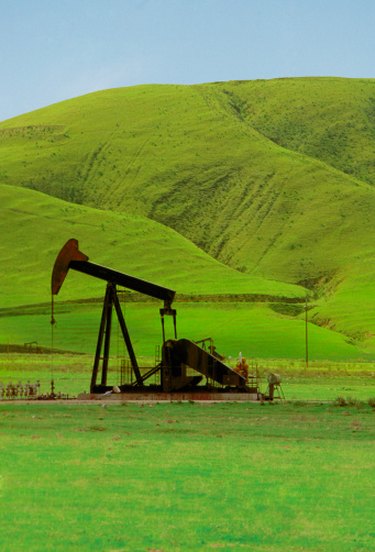Things You'll Need
Quart-size glass jar with cover
Table salt

If you suspect there is petroleum contamination in your soil, the fastest way to test for it is to pick up a handful and smell it. If it smells like oil, chances are very good it contains oil. However, soil can still contain trace amounts that cannot be detected by human noses. Although you should still have your soil tested by a professional soil testing company if you find evidence of petroleum products, a quick test can tell you if there is a need for professional intervention.
Step 1
Put about 1 inch of soil into a quart-size glass jar.
Video of the Day
Step 2
Add 1 1/4 cups of regular tap water to the jar.
Step 3
Place 1 tsp. table salt into the water.
Step 4
Cover the jar securely. Shake it thoroughly to adequately mix up the soil particles.
Step 5
Set the jar in a protected location where it won't get knocked over.
Step 6
Allow the contents to settle for approximately one to two days.
Step 7
Remove the cover from the jar and inspect the surface of the liquid contained within. If there appears to be a rainbow-like film on top of the surface, similar to the rainbow film on pavement from spilled gasoline, it is an indication that petroleum contamination may be present in your soil.
Tip
An added bonus of testing your soil this way is the layers of sand, silt, and clay will settle separately. This will give you a good indication of the overall structure of your soil, whether it is primarily clay, sand, loam or a combination.
Warning
For a more accurate and definitive reading of the petroleum contamination in your soil, consult a professional soil testing company.
Video of the Day